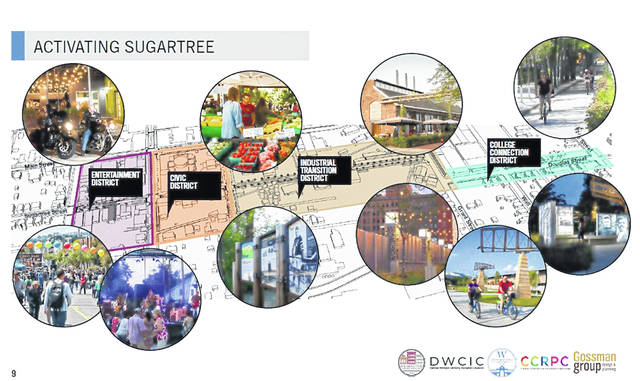
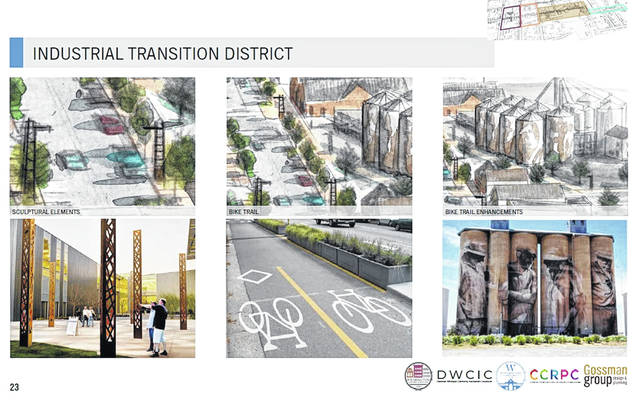
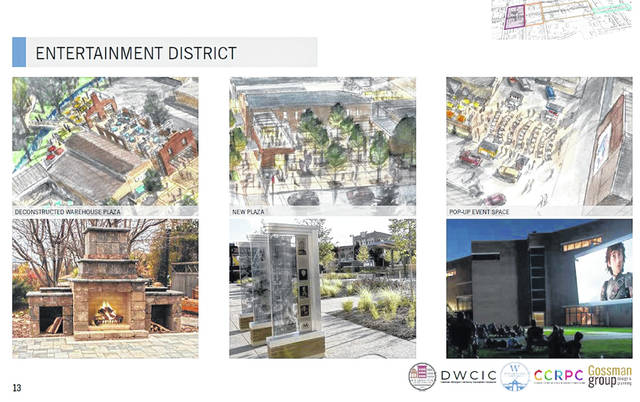
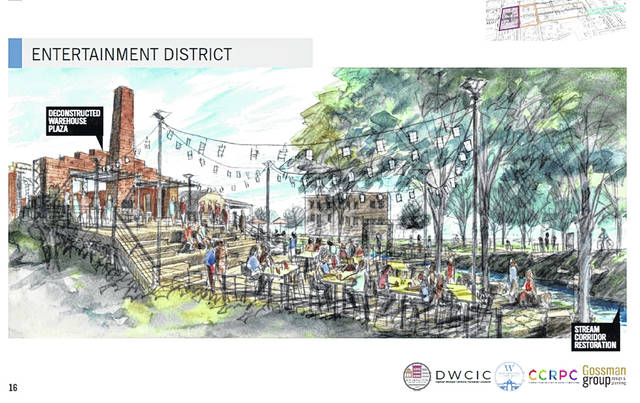
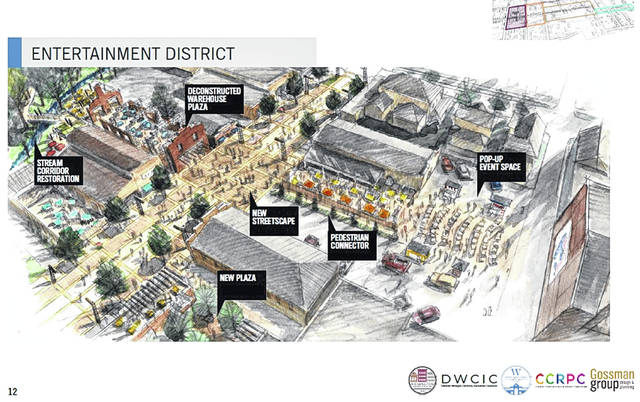
WILMINGTON — Visions for the Sugartree Street corridor hope to bring new light to the area in many ways.
Regional Planning Commissioner Taylor Stuckert said city officials had been looking at doing something with Sugartree Street since 2012.
Recent developments in the area reinvigorated the ideas and planning.
“The city has looked at its potential over the years,” said Stuckert. “It seems to have a lot of potential for new businesses, residentials, connectivity to the college, and civic services.”
According to a conceptual design and development plan, in the summer of 2019 the Gosssman Group was engaged by Wilmington Community Partners to explore opportunities to enhance the corridor.
The partners include Main Street Wilmington, Downtown Wilmington Community Improvement Corporation, the City of Wilmington, and the Clinton County Regional Planning Commission.
Sugartree Street is considered to offer unique opportunities, according to the development plan. It has been studied several times over the years due of its location in the downtown area and its proximity to Wilmington College.
Those planning the project, while working with a local task force and the team, prepared a conceptual package based on the expected outcomes.
While engaging with locals at street festival gatherings and meetings with the community, the task force and individuals came up with aspects local residents want to see (and that will also bring non-locals to the area).
“We had a booth set up at a Third Friday event last year with different concepts,” said Stuckert.
“There’s no specific time of completion. This transformation will take many years. It may also determine on the catalysts and new improvements.”
Locals indicated they want to see an increase in safety — including adding more lighting, an increase in pedestrian mobility, and defined bike lanes. They also want to see the bike trail network enhanced.
They also desire more restaurants and bars, mixed-use buildings, places for college students, and new structures. People would also like to see improvements to the older structures, and even graphics added to the grain elevtors.
Stuckert said this is a long-term plan with multiple phases.
“The city isn’t just doing this and hoping it’ll happen,” he said. “They’ll be doing this in a responsible form. They’ll be implementing these aspects over the years.”
In the first phase of the streetscaping, it would cost roughly $720,000 to $1 million. It would be a pedestrian-focused hardscape with potential cafe and retail spill-out frontage and focus on the blocks between Mulberry and South streets.
The city would work on paving traffic and pedestrian zone surfaces with primarily concrete and stone or paver bordering/banding areas.
Street trees would also be planted, with street lighting with decorative light mast fixtures, street furnishings, public art installations, and utility modifications (gas, water, sanitary sewer and telecommunications).
In a section called “Activating Sugartree,” the districts are identified “reflecting the evolution of the corridor.” The four districts includethe Entertainment District, Civic District, Industrial Transition District, and the College Connection District. Each one was given a profile.
For the Entertainment District, the profile indicates it is a “logical outgrowth of the restaurant and bar development currently underway on the corridor as well as the historical entertainment and hospitality development on Main Street.”
It indicates the district would be an ideal location for street festivals, outdoor gatherings for entertainment, gallery/pub crawls, and “day-to-day public use of outdoor plazas by pedestrians, bikers and walkers.”
The Civic District profile highlights that downtown is home to the historic Clinton County Courthouse. Being adjacent to the entertainment district, the street would provide a central location for events like antique car shows and farmers markets.
The Industrial Transition District refers to the areas of Sugartree, Grant and Douglas streets where a variety of land uses have been built over the years — a historically mixed-use neighborhood made up of industrial, manufacturing, retail, and residency. “Today Champion Bridge dominates the majority of the land as evidenced by their historic campus of fabrication buildings,” the profile says.
The College Connection District is, in effect, a neighborhood street, according to the report.
“Douglas Street is the shortest route from Wilmington College to downtown but lacks the aesthetic appeal and signing to make that comfortable and apparent to users,” the profile states.
Basic streetscape improvements would provide an “environment that would greatly enhance the pedestrian experience.”
“The overarching goal is to infuse new life into this section, to provide business and residential opportunities and make connections to residents and the college community,” said Stuckert.
The first reading of a resolution adopting the conceptual design and development plan is expected to take place at Thursday’s Wilmington City Council meeting.






